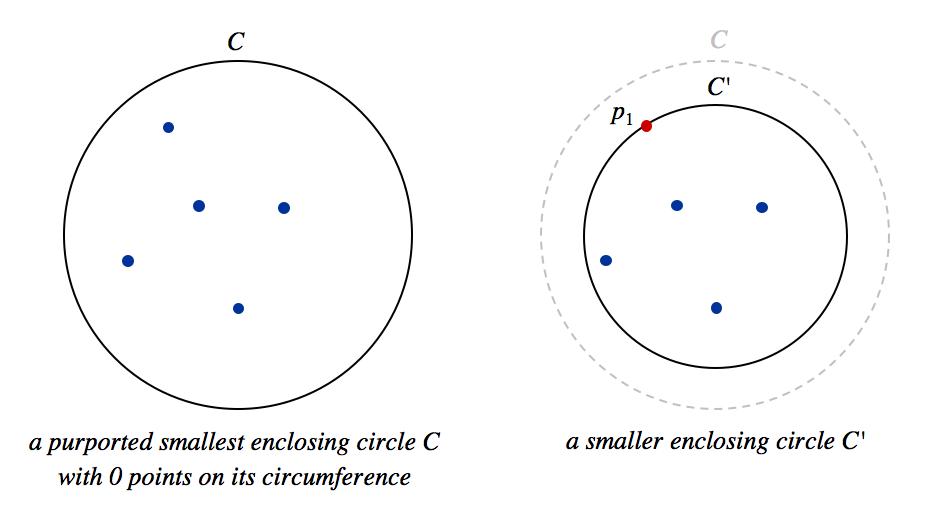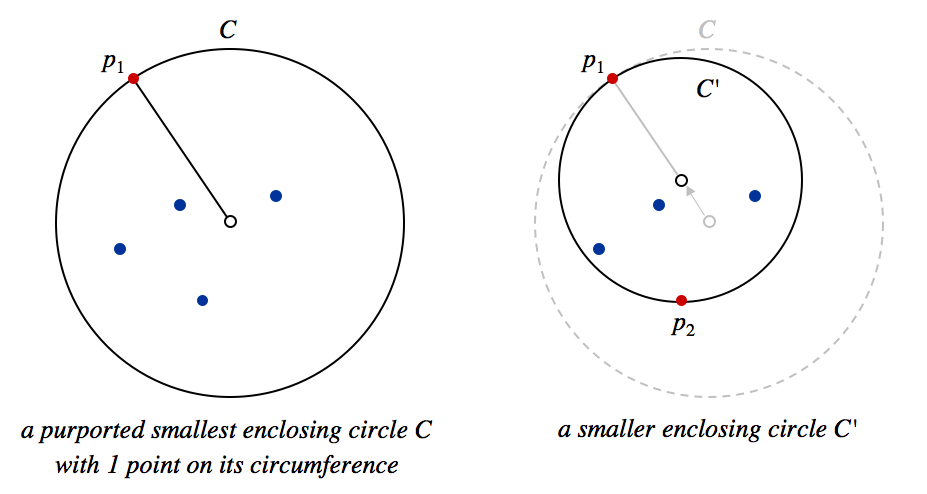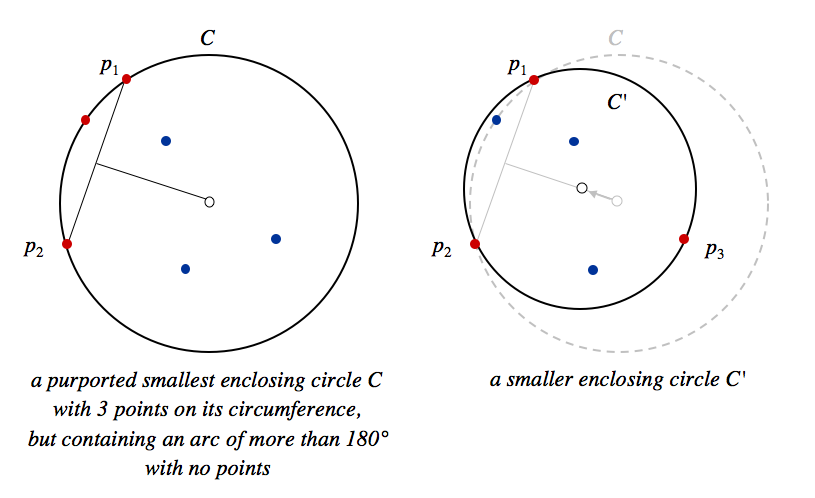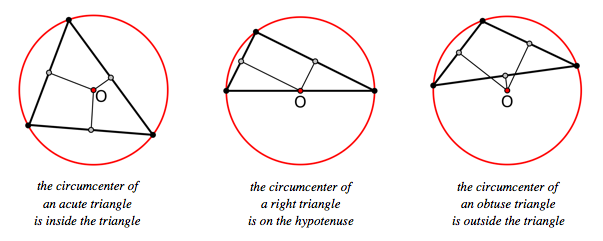
|
|
The following applet (written by Xiumin Diao) draws the smallest enclosing circle. Click to add points; drag a point to move it.
|
|
What should my program do if the input consists of one (or zero) points? In the first case, output a circle centered at the point of radius 0; in the second case report that the input has no points.
What should my program do if a point appears more than once in the input? Handle it correctly.
In the formula for the center and radius of a circle defined by 3 points in the boundary, what happens when the denominator a is zero? Observe that the formula for a is the same as for computing the ccw of three points. When a is zero, the three points are collinear, so they cannot be on the boundary of the same circle (assuming they are distinct).
Are the two or three boundary points that define the circle guaranteed to be on the convex hull? Yes. Feel free to exploit this fact to optimize your solution.
Any hints of faster algorithms? This website describes an Chrystal's algorithm; this website describes another algorithm for the problem.
My answers differ from those in the assignment in the 14th or 15th decimal place. Should I be concerned? No. You are introducing floating point roundoff error into your computation in many places (reading in the decimal points and the arithmetic to compute the center and radius of the circle).
I'd like to access the instance variables of Point outside of the Point class. Can I use accessor methods? Using accessor methods generally violates the encapsulation of that class. Any use of those variables should be handled inside the Point class.
But that would mean adding more methods to the Circle and/or Point class; wouldn't that violate the API? As long as the defined API performs as required, you can add any public or private methods to any of the classes that you write. In fact, we encourage you to have more shorter methods rather than few long ones. Here are some other recommended style guidelines.
|
|
Input. Here are some sample input files.
|
|
These are purely suggestions for how you might make progress. You do not have to follow these steps.
|
|
Theorem. Given N points in the plane, the smallest enclosing circle is unique.
Proof. Consider two smallest enclosing circles C1 and C2 of radius r and centers c1 and c2. Consider the circle C centered at 1/2 (c1 + c2) and radius sqrt(r2 − a2), where a is one-half the distance between c1 and c2. C encloses all of the points since it contains C1 ∩ C2.

Theorem. Given N ≥ 2 points in the plane, the smallest circle that encloses them contains at least two of the points on its circumference. Moreover, every arc on the circumference of 180 degrees or more contains at least 1 point. (Thus, if the circumference contains exactly two of the points, they are antipodal - exactly 180 degrees apart.)
Proof. The idea is simple: we show that if an enclosing circle C does not have this property, then we can find a smaller circle C' that still encloses all of the points.



Theorem. A triangle is acute (all angles smaller than 90 degrees) iff its circumcenter (center of the unique circle with the 3 endpoints of the triangle on its circumference) lies inside the triangle; it is a right triangle iff the circumcenter lies on one of its sides (a hypotenuse); and it is obtuse (has an angle bigger than 90 degrees) iff the circumcenter lies outside the triangle.
